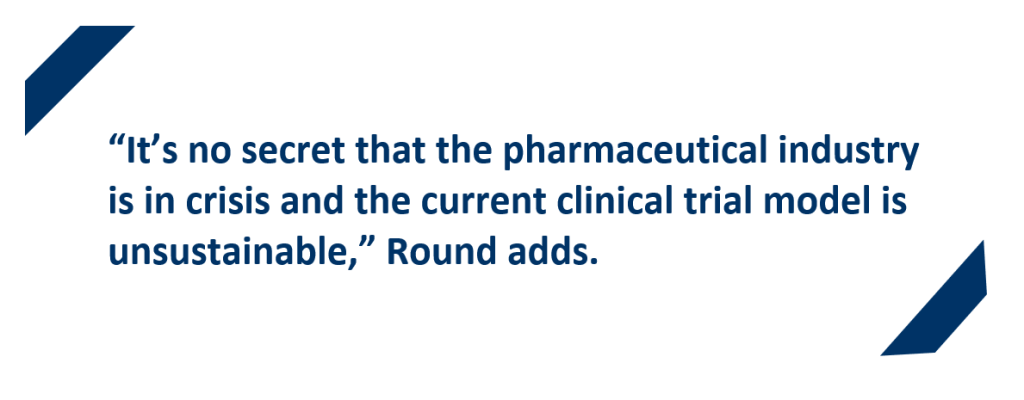Clinical trials (CTs), while essential, are challenging to conduct and complete, and several unmet needs of all CT stakeholders are yet to be addressed. These needs and challenges range from better recruitment of trial investigators and patient enrolment to optimization of trial protocols and the spread of awareness about trials. Let’s look at some of these with regard to pharma, physicians, and patients.
CT-related challenges for pharma
- Cost of developing a new drug
The expected mean estimate of bringing a new drug to the market is approximately $1.3 billion. However, the expenditure can range anywhere between less than $1 billion and more than $2 billion, including preclinical expenditures, capital costs, and the costs of drugs that do not see the light of day. The high cost of clinical research can sometimes deter pharma from undertaking CTs, limiting patient access to novel treatments.
- Sky-high costs of conducting CTs
The costs of pharmaceutical CTs largely depend on the therapeutic area being studied. A study averages the expenses of Phase 1 trials at a site in the US in the range of $1.4 to $6.6 million, $7.0 to $19.6 million for Phase 2 studies, and anywhere between $11.5 and $52.9 million for Phase 3 trials.
- Trial failures and delays
Most trials fail due to efficacy-related issues. A study reported that 54% of trials involving novel therapeutics fail in clinical development and 57% fail due to inadequate efficacy. Moreover, only 6% of trials are completed on time and more than 80% experience delays due to patient recruitment and retention issues. According to Rosamund Round, Director, Patient Innovation Center at PAREXEL, 85% of all CTs presently fail to recruit enough patients and dropout rates are high.

- Complex regulatory requirements
Innumerous administrative and regulatory requirements at all stages of a CT can cause significant delays in its initiation. Moreover, regulations can vary across countries and regions (e.g., the latest EU regulations on CT summaries). Thus, when pharma companies want to conduct multicenter/multi-national CTs, they need to comply accordingly, put aside a separate budget for additional requirements, delegate the task to the most appropriate team, etc.
- Time lags between protocol approval and trial activation
New CTs often take over 6 months from protocol approval to activation of the trial. Such protracted timelines incur heavy costs and decrease overall trial efficiency.
- Difficulty enrolling patients and physicians
As stated above, many trials are terminated because they fail to accrue enough participants. Data even indicate that CT timelines have potentially doubled because of low recruitment rates. Similarly, physician participation in CTs is also a major problem.
CT-related challenges for physicians
It is crucial to choose the most appropriate physicians for recruitment in a CT, based on their field/area of expertise and academic profile. However, this is not always easy as physicians have myriad concerns around participation in clinical research.
- Unfamiliarity with processes and lack of awareness
Many physicians are unaware of ongoing trials or simply not interested in the study topic. This lack of interest may arise from unclear clinical and scientific rationales of studies. Additionally, several physicians are hesitant about participating in CTs due to unfamiliarity with research methods and procedures and trial-specific communication difficulties.
Physicians can also be reluctant to act as referring physicians due to several reasons. For example, most of them do not have sufficient information about the relevant ongoing trials, many are not actively involved in research, and a few may fear being removed from the picture and losing their patients to the trial investigator physicians.
- Lack of training and administrative support
With the ever-increasing complexity of clinical research, lack of training for the participating physicians and their staff may prove to be a deterrent. Furthermore, insufficient administrative support—for paperwork, clerical activities, data management, etc.—takes time away from their clinical practice, resulting in loss of earnings. Involvement in a CT would also require gatekeeping on behalf of the trial participants, which can be an added burden on the already busy physicians.
- Unattractive incentives
The loss of professional autonomy, narrow incentives, as well as lack of rewards and recognition can also prevent physician participation in CTs.
CT-related challenges for patients
- Enrolment-related hesitancy
As stated above, a majority of CTs fail to recruit patients. The patient enrolment rate is usually affected by the following factors: lack of awareness about the possibility of participating in a CT, narrow eligibility criteria and misunderstood expectations, fear and anxiety due to the uncertain nature of clinical research, distrust regarding industry-sponsored trials, difficulty locating a trial, confusion due to extensive paperwork associated with the informed consent process, and financial constraints due to insurance companies sometimes not covering the costs.
- Continuation-related challenges
The patient dropout rate in CTs has historically been around 30%. Some common factors that contribute to this number are more frequent testing and the number of clinic visits required, inconvenient location of trial (travelling or commuting regularly can be a hurdle), patients not being able to choose which treatment they get in randomized double-blinded studies, treatment failure or underperformance, adverse side effects, and lack of appreciation.
In conclusion, there is room for improvement in the way CTs are conducted. Some ways to mitigate CT-related issues for all stakeholders are spreading awareness about CTs, integration of new technologies to improve trial processes, streamlining regulatory processes, adapting to emerging trial complexities, implementing better decision-making, as well as reducing costs and adopting innovative and efficient clinical practices to provide effective treatment to patients, who are the backbone of CTs.
Share this post
About the author

Kwisha Shah
Kwisha Shah is Marketing Content Manager, Thought Leadership, at Cactus Life Sciences.













